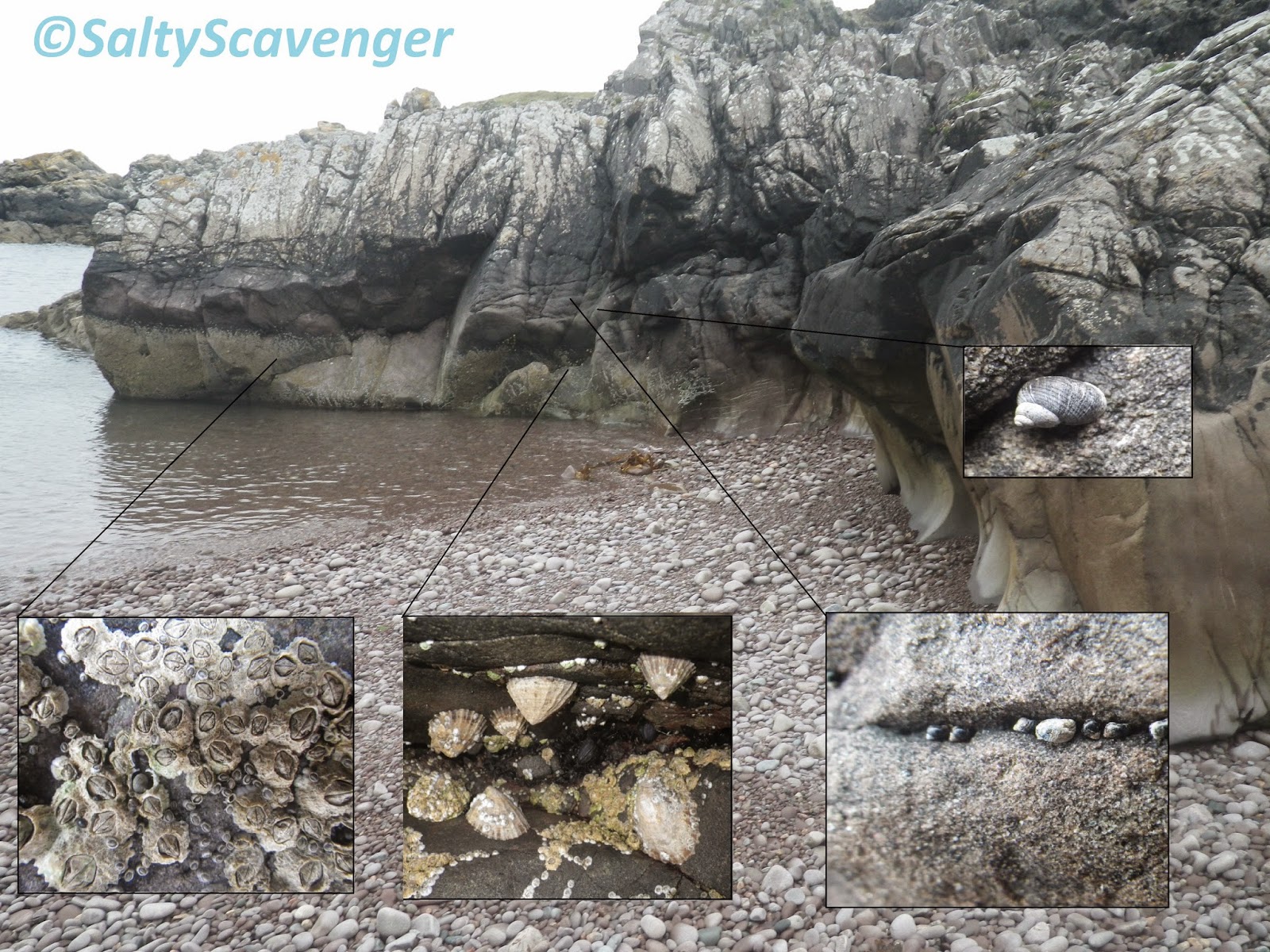The low cliffs around Walls incline steeply toward the sea and are covered by lichens, in this sheltered inlet a distinct transition has formed between the yellow and grey lichens of the supralittoral and the tar lichen of the littoral fringe. Below the lichens are bands of barnacles and then fucoids.
Habitat classification:
Biotope complex
|
LR.MLR.BF (Barnacles and fucoids on
moderately exposed shores)
|
LR.FLR.Lic.(Lichens on supralittoral
and littoral fringe rock).
|
Biotope
|
LR.MLR.BF.FspiB (Fucus spiralis on
full salinity exposed to moderately exposed upper eulittoral rock)
|
LR.FLR.Lic.Ver (Verrucaria maura on
littoral fringe rock)
|
LR.FLR.Lic.YG (Yellow and grey
lichens on supralittoral rock)
|
 |
| The low cliffs slope steeply and are characterized by lichens. Habitat classification: LR.FLR.Lic.(Lichens on supralittoral and littoral fringe rock). |
 |
| Yellow and grey lichens occur with sea pinks in the supra littoral zone, below which tar lichen forms a black covering over the rocks. Habitat classification LR.FLR.Lic.YG (Yellow and grey lichens on supralittoral rock) and LR.FLR.Lic.Ver (Verrucaria maura on littoral fringe rock). |
 |
| Sea ivory (Verrucaria maura), grey, orange and brown lichens are commonly encountered within the habitat yellow and grey lichens on supralittoral rock. |
Yellow and grey lichens occur in the supra littoral zone, below which tar lichen forms a black covering over the rocks in the littoral fringe with barnacles and fucoids below . Habitat classification LR.FLR.Lic.YG (Yellow and grey lichens on supralittoral rock), LR.FLR.Lic.Ver (Verrucaria maura on littoral fringe rock) and LR.MLR.BF (Barnacles and fucoids on moderately exposed shores).
























